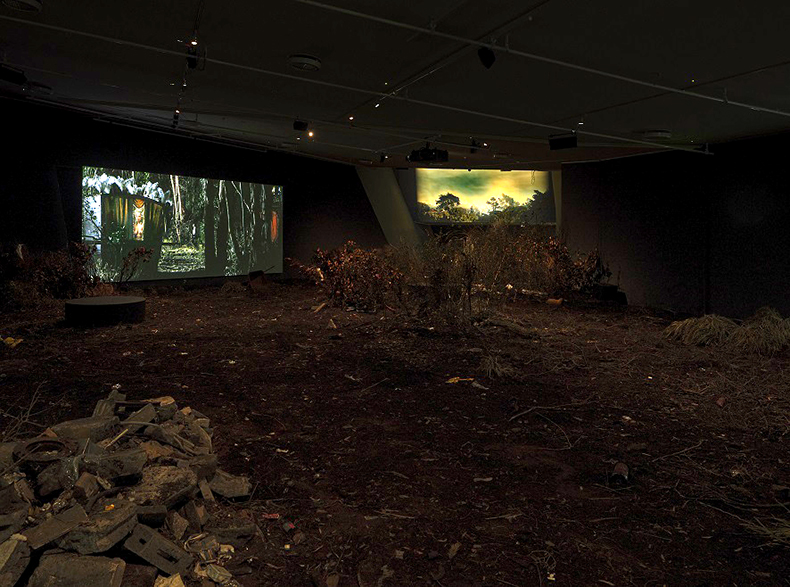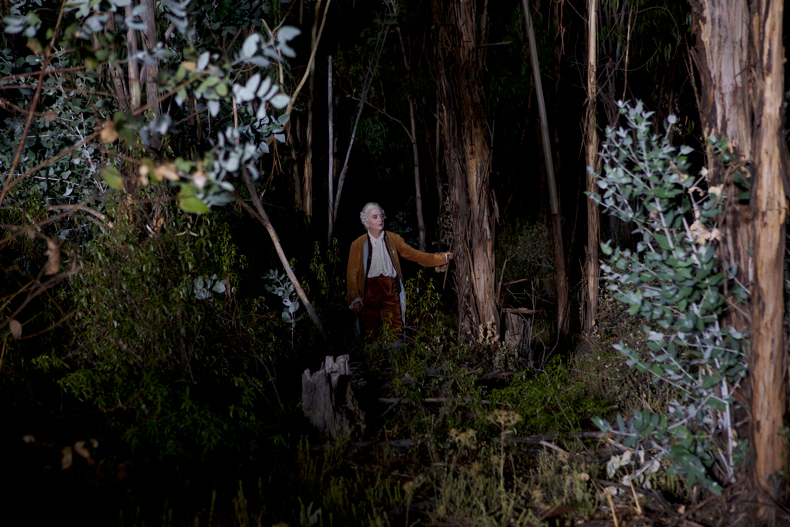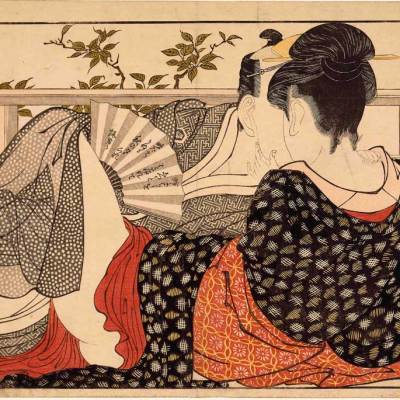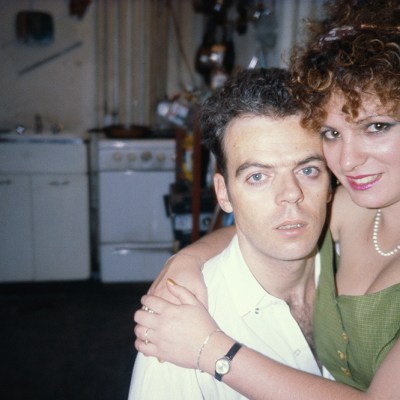Albert Serra has never lacked confidence. The Catalan artist and film-maker once declared himself ‘the best’ Spanish director around, is prone to calling his films ‘masterpieces’ and has on several occasions described his work as ‘unfuckable’ – that is, you couldn’t poke holes in it if you tried. His films rarely make for easy viewing: unconcerned with plot or conventional character development, he favours near-static narrative and has taken a wilfully oblique approach to chronicling episodes in the lives of historical and literary figures such as Casanova, Dracula and Louis XIV. Serra’s penchant for letting things unspool before our eyes at considerable length can feel distinctly Warholian. But over the years his critical and commercial stock has risen sharply. All but one of the six fiction features he has made since 2006 has premiered at Cannes (the exception, Story of My Death, won the top prize at the Locarno International Film Festival in 2013); he represented Catalonia at the Venice Biennale in 2015 with his 12-hour multi-screen installation Singularity; and his latest film, Pacifiction, garnered nine César nominations, won two, and was anointed the best film of 2022 by Cahiers du cinéma.
Despite how comfortable he seems with different locales and periods – 17th-century Spain in Honour of the Knights, the court of Versailles in The Death of Louis XIV, modern-day Tahiti in Pacifiction – there is one text he keeps returning to, one itch he traverses whole disciplines to scratch. ‘Liberté’ began life as a play at the Volksbühne theatre in Berlin in 2018, before evolving into a film that won the Jury Prize at Cannes in 2019. Footage from the movie also constituted the bulk of a two-channel installation at the Reina Sofía in Madrid that same year. Now Serra has delivered what he deems to be the definitive treatment of the material: an immersive exhibition at the Eye Filmmuseum in Amsterdam, which recreates the setting of the film in a 1,200sqm space.
Installation view of ‘Albert Serra – Liberté’, with the lights on, at the Eye Filmmuseum, Amsterdam. Photo: Studio Hans Wilschut; © Albert Serra

That setting is a nocturnal wood in 1770s France, near the Prussian border. In all versions of ‘Liberté’, which takes place over the course of one night, a number of pasty-faced aristocrats banished from the court of Louis XVI meet in a forest for a series of increasingly debauched sexual encounters, mostly with younger women. Mining the twilit woodland tableaux of Fragonard and Boucher for erotic and voyeuristic potential, Liberté is an heir of sorts to a number of European arthouse movies from the ’70s in which men of privilege take themselves off to a remote location and indulge their bodily appetites to grotesque extremes: the satirical La Grande Bouffe (1973), say, or the trenchant, horrifying Saló, or the 120 Days of Sodom (1975). Like the latter, Liberté, shot unflinchingly by the cinematographer Artur Tort, questions how we consume images: there is no plot, no back story, just coupling after costumed coupling until we ask ourselves why we’re still watching.
Over 132 minutes, the film’s somnambulant rhythms get under the skin, so that when you do emerge blinking into the sunlight you feel tarnished on some molecular level. But despite being shot entirely en plein air, the whole thing feels airless, turgid. The new exhibition is surely the best way into the material: it brings the movie’s stillborn themes to life with impish humour, film-historical context and all the tricks a three-dimensional space can play on you. Perhaps the clue is in the name: where better to host a show about voyeurism and prurience than a museum called the Eye?
Installation view of ‘Albert Serra – Liberté’ at the Eye Filmmuseum, Amsterdam. Photo: Studio Hans Wilschut; © Albert Serra

The institution has turned its main gallery into a night-time forest clearing, complete with earth, petrichor and twinkling LED stars. And though the two empty 18th-century carriages on display suggest that Serra is recreating a time and a place, the deliberately anachronistic litter strewn around – fag packets, sweet wrappers, household appliances, a barbecue – speaks to the continuing relevance of his themes. Anyone who enjoys flouting health and safety precautions is in for a frisson: trip over a root and you might smash your head on one of the very real boulders or, worse, end up at eye level with a discarded condom. Besides the fake starlight, the only illumination comes from several large screens placed around the room, showing footage from the film. Serra is known for his multi-camera set-ups, in which he shoots any given scene from different angles simultaneously without telling his actors which cameras are the principal ones: the disorientation is meant to help the performance. Here, the viewer finds themself amid a succession of sordid scenes unfolding on all sides – immersed, if not complicit.
If there is an element of auteurial ego here – ‘This is what being in a Serra masterpiece feels like’ – it’s accompanied on the part of the viewer by a creeping self-consciousness. You’re not just watching people have sex, you’re watching people watching people have sex, and whenever one of the voyeurs in the film turns up with his looking glass, you’re watching the sex at three removes, all in the knowledge that you, too, are being observed. In the earthy darkness of the gallery, where the only sounds are cicadas, moans, thunder and rain, I was relieved that looking was all people were doing. Then again, it was a Tuesday lunchtime.
A still from Liberté (2019), directed by Albert Serra. Courtesy Filmgalerie 451

Equally fascinating is watching people not engage at all. Some punters strolled right past a scene of a woman being stripped and whipped for several unrelenting minutes. Who’s the weirder party here: them for ignoring it, or me for watching? Both seem equally human responses. Perhaps the fact that the exhibition can be entered via two adjacent passages is not so much a dirty joke as a nod to the duality of man.
Or perhaps it gestures toward the lack of true choice. The women taking part in the escapades may seem willing, but that word – and the word ‘liberté’ – is relative in the face of stark sexual power dynamics. That’s not to say that the men in ‘Liberté’ don’t suffer debasement, just that they seem to opt in to it. They are, however, slaves to their own appetites, and are pinned, just as much as their female companions, by our remorseless gaze.
As is made clear by an adjacent room that is locked off but visible through two portholes (making a Peeping Tom of even the most casual visitor), this gaze has been catered to for about as long as films have existed. Three screens in this annex display pre-talkie rural pornography – including the French short Soeur Vaseline (1925) and The Farmer’s Daughter, a bit of business of indeterminate provenance – that is even more unstinting on anatomical detail than anything in ‘Liberté’, plucked by Serra from the Eye’s own collection. With its utter abandon and sheer old-timeyness, this vintage porn is strangely humbling, and perhaps it humbled Serra too: for all his exceptionalism, he’s happy to exist in a continuum after all.
A still from Liberté (2019), directed by Albert Serra. Courtesy Filmgalerie 451

‘Albert Serra – Liberté’ is at the Eye Filmmuseum, Amsterdam, until 29 September.



